Top Rankings
Niagara-Wheatfield Central School District ranks among the top 20% of public school district in New York for:
Category
Attribute
Community Size
Largest student body (number of students) (Top 1%)
For the 2025 school year, there is 1 public preschool serving 78 students in Niagara-Wheatfield Central School District. This district's average pre testing ranking is 3/10, which is in the bottom 50% of public pre schools in New York.
Public Preschool in Niagara-Wheatfield Central School District have an average math proficiency score of 35% (versus the New York public pre school average of 38%), and reading proficiency score of 30% (versus the 41% statewide average).
Minority enrollment is 100% of the student body (majority American Indian), which is more than the New York public preschool average of 62% (majority Hispanic).
Overview
This School District
This State (NY)
# Schools
6 Schools
1,575 Schools
# Students
3,139 Students
680,405 Students
# Teachers
283 Teachers
57,270 Teachers
Student : Teacher Ratio
11:1
11:1
District Rank
Niagara-Wheatfield Central School District, which is ranked #298 of all 1,015 school districts in New York (based off of combined math and reading proficiency testing data) for the 2021-2022 school year.
The school district's graduation rate of 87% has decreased from 91% over five school years.
Overall District Rank
#311 out of 1020 school districts
(Top 50%)
(Top 50%)
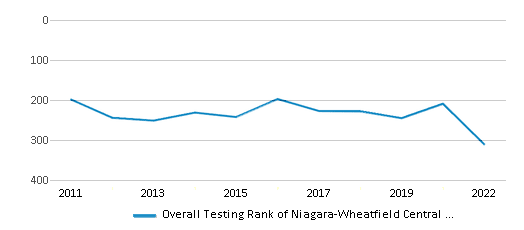
Math Test Scores (% Proficient)
59%
46%
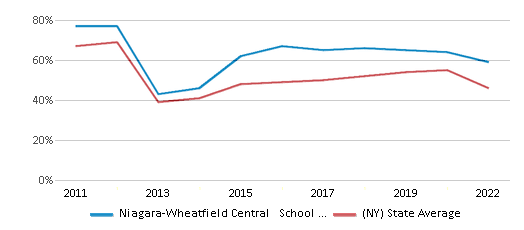
Reading/Language Arts Test Scores (% Proficient)
51%
49%
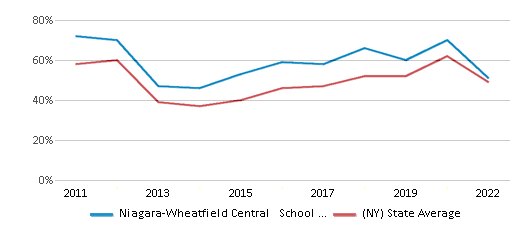
Science Test Scores (% Proficient)
88%
78%
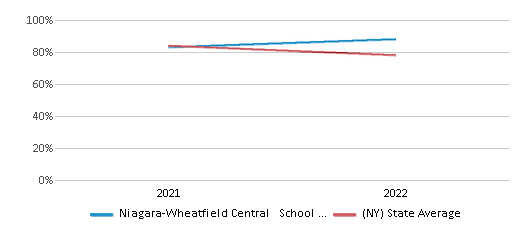
Graduation Rate
87%
87%
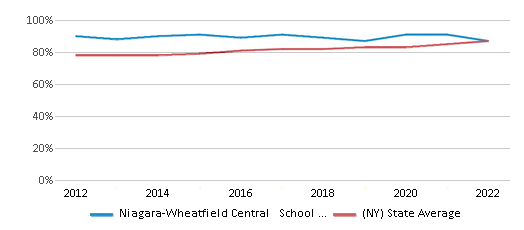
Students by Ethnicity:
Diversity Score
0.39
0.73
# American Indian Students
189 Students
6,882 Students
% American Indian Students
6%
1%
# Asian Students
64 Students
74,011 Students
% Asian Students
2%
11%
# Hispanic Students
129 Students
208,386 Students
% Hispanic Students
4%
31%
# Black Students
80 Students
108,146 Students
% Black Students
2%
16%
# White Students
2,438 Students
257,567 Students
% White Students
78%
38%
# Hawaiian Students
2 Students
1,683 Students
% Hawaiian Students
n/a
n/a
# Two or more races Students
237 Students
23,663 Students
% of Two or more races Students
8%
3%
Students by Grade:
# Students in PK Grade:
9
62,211
# Students in K Grade:
198
99,006
# Students in 1st Grade:
195
97,399
# Students in 2nd Grade:
234
96,389
# Students in 3rd Grade:
245
87,433
# Students in 4th Grade:
231
87,229
# Students in 5th Grade:
244
81,167
# Students in 6th Grade:
217
24,209
# Students in 7th Grade:
240
13,778
# Students in 8th Grade:
268
14,339
# Students in 9th Grade:
249
2,893
# Students in 10th Grade:
246
2,861
# Students in 11th Grade:
274
2,527
# Students in 12th Grade:
278
2,549
# Ungraded Students:
11
6,415
District Revenue and Spending
The revenue/student of $30,044 in this school district is less than the state median of $31,307. The school district revenue/student has grown by 5% over four school years.
The school district's spending/student of $26,293 is less than the state median of $32,183. The school district spending/student has grown by 5% over four school years.
Total Revenue
$94 MM
$78,541 MM
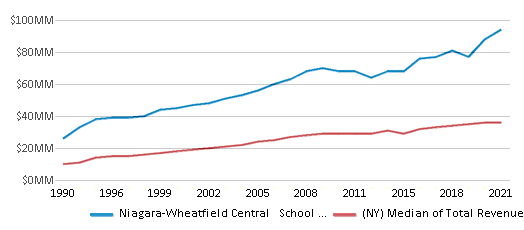
Spending
$83 MM
$80,737 MM
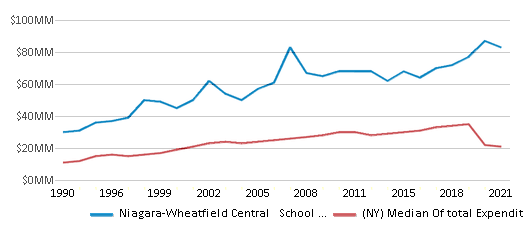
Revenue / Student
$30,044
$31,307
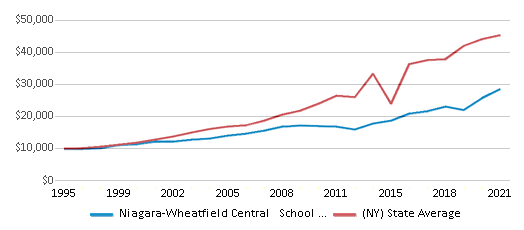
Spending / Student
$26,293
$32,183
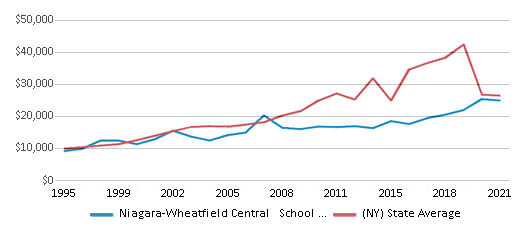
Best Niagara-Wheatfield Central School District Public Preschools (2025)
School
(Math and Reading Proficiency)
(Math and Reading Proficiency)
Location
Grades
Students
Rank: #11.
Tuscarora Elementary School
(Math: 30-39% | Reading: 21-39%)
Rank:
Rank:
3/
Bottom 50%10
2015 Mt Hope Rd
Lewiston, NY 14092
(716) 215-3671
Lewiston, NY 14092
(716) 215-3671
Grades: PK-6
| 78 students
Recent Articles

Year-Round Or Traditional Schedule?
Which is more appropriate for your child? A year-round attendance schedule or traditional schedule? We look at the pros and cons.

Why You Should Encourage Your Child to Join a Sports Team
Participating in team sports has a great many benefits for children, there is no doubt. In this article you will learn what those benefits are.

White Students are Now the Minority in U.S. Public Schools
Increasing birth rates among immigrant families from Asia and Central and South America, combined with lower birth rates among white families, means that for the first time in history, public school students in the United States are majority-minority. This shift in demographics poses difficulties for schools as they work to accommodate children of varying language abilities and socio-economic backgrounds.





